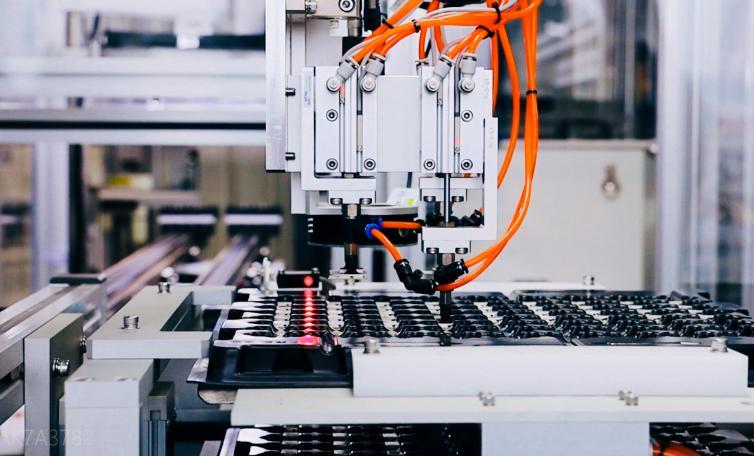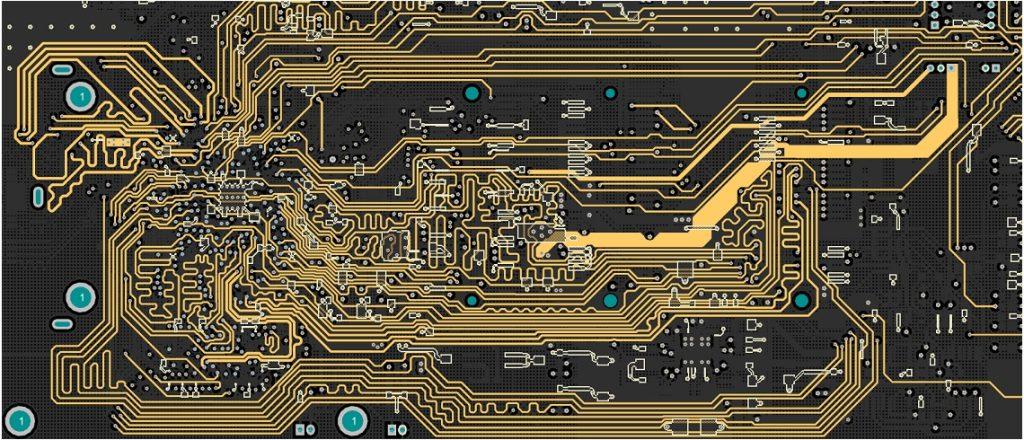- The advantages of the new high heat dissipation and environmental protection integrated circuit board technology used in LED printed circuit boards.
- Low-temperature solder urgent problem points to be solved
Green manufacturing is the inevitable trend of global economic development, and environmental protection and energy-saving LED technology are the future development directions. Recently, LED printed circuit board assembly technology has ushered in a breakthrough in new wire-free strip technology, which is expected to achieve absolute environmental friendliness and efficient manufacturing of LEDs.
The advantages of the new high heat dissipation and environmental protection integrated circuit board technology used in LED printed circuit boards.
1. The use of the physical cutting method process, eliminating the traditional circuit board using the chemical etching method of manufacturing, after more than 20 processes for acid washing, water washing, etc., resulting in a lot of water pollution and energy waste.
2. Using the unique pure copper circuit design and PET material with better heat dissipation performance, the heat dissipation capability of the PCB board is greatly enhanced, effectively dispersing the heat generated by the LED beads, further enhancing the service life of the LEDs, breaking through the demand for decorative grade applications, and hopefully achieving the product that allows the strip to be truly applied to the main lighting.
3. Through the optimization of the process-making process, the automated process has been realized, and the production efficiency has been greatly improved, reducing the number of assembly line operators by 80% compared to the traditional assembly process.
A new technology, however, cannot be flawless. High heat dissipation environmentally friendly integrated circuit board due to the use of new environmentally friendly PET material, the LED printed circuit board assembly temperature has put forward more demanding requirements; the traditional PCB board can reach about 300 ℃ temperature resistance. However, the new PET material temperature resistance can only reach 200-210 ℃; once the assembly and welding temperature exceed this temperature range, the PCB board light deformation, “blistering” phenomenon, the heavy will lead to basic yellowing, embrittlement, etc. Therefore, low-temperature assembly solder paste has become the key to solving this problem.
Considering the cost and other factors, the current LED printed circuit board assembly with solder is mainly based on the traditional Sn-Pb series of alloys, with a melting point range of more than 180-230 ℃. The emergence of new technologies will inevitably lead to part of the Sn-Pb solder assembly temperature problems due to high and can not meet the use of requirements. For example, the traditional SnPb60, SnPb50, SnPb45 and other solder liquid phase line temperature has exceeded 200 ℃, will no longer adapt to the requirements of the new assembly technology, the development of the alloy melting point below 200 ℃ solders has been the LED industry’s top priority.
In exporting to the EU and the US, LED products need to meet lead-free requirements, and the application of low-temperature lead-free solder will be faster and more efficient to achieve the export of LED products. It is no exaggeration to say that in the future, companies with low-temperature solder technology will stand at the high point of the LED industry, and the owners of lead-free low-temperature solder are standing at the top of the industry’s high point.
Low-temperature solder urgent problem points to be solved
1. Sn-Pb system solder temperature is overall high, and the assembly temperature must be addressed below 200 ℃. Currently, only part of the mature program.
2. new low-temperature lead-free solder, the need to break through the traditional Sn-Bi solder joints brittle problems.
3. New low-temperature lead-free solder, the need to solve the traditional Sn-Bi solder joint around the solder black, low brightness of the solder joint problem.
Anpllopcb recently introduced new low-temperature lead-free solder COMPO LF143 LED printed circuit board assembly services; the assembly temperature is reduced to below 180 ℃. In particular, it breaks through LED board temperature resistance limitations and the brittleness of traditional low-temperature lead-free alloys. It has been applied in batches in LED rigid board assembly. To solve the problem of the lead-free, soft board, our technicians have developed an improved COMPO LF143+ based on COMPO LF143, which will lay a good technical alloy foundation for the mass development of our soft board assembly business in the future.
To meet the high-speed development demand of the LED market, we find a solder that considers low cost, wide window and low temperature to solve the temperature problem of PCB assembly. Based on the COMPO LF143 alloy, we have improved and launched the LTS146 and LTS146+ alloy assembly technology, which is suitable for LED hard and soft board assembly. The two alloys, which can reduce the assembly temperature to below 190°C, the widening of the process window and the improvement of the alloy system significantly reduce the probability of common defects such as false solder, voids and dropped parts. COMPOLTS146 or COMPOLTS146+ alloy will become a better choice to optimize the existing solder quality.
New low-temperature solder technology matched with new high heat dissipation and environmental protection integrated circuit board technology, boosting the wire-free strip, will become a new generation of set main lighting, decorative with mainstream products. We hope that the energy-saving and environmental protection benefits of COMPO LF143 and LTS146 series solder and the concept they convey will promote the faster development of the LED industry. Anpllo will work with the community to develop a global green economy.



